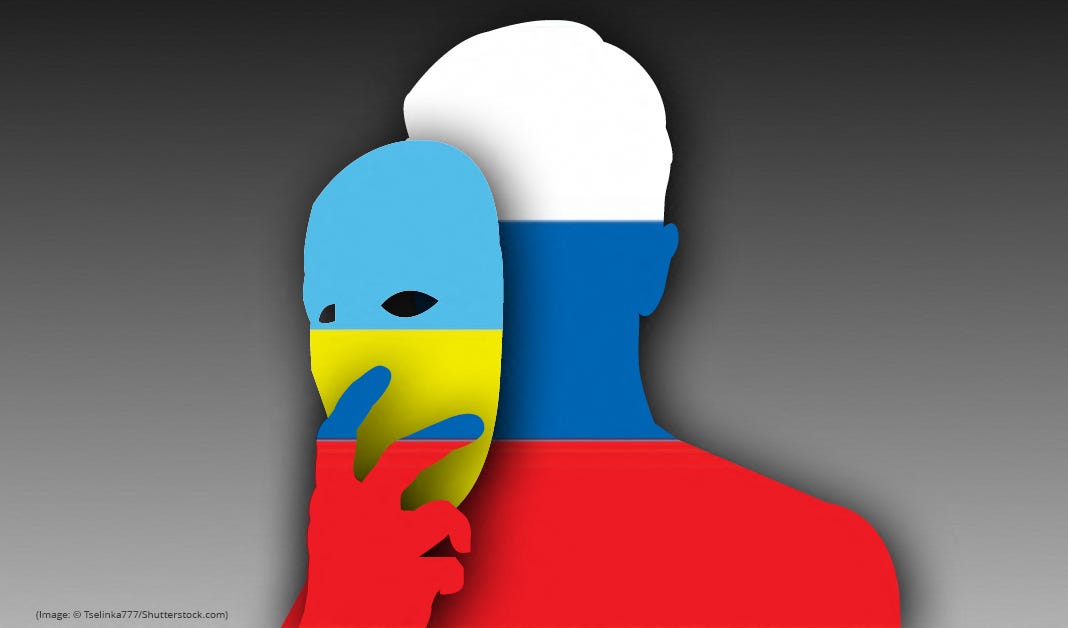This morning, Secretary of State Antony Blinken will deliver special remarks to the U.N. Security Council on the deteriorating situation at the Russia / Ukraine border. “The evidence on the ground is Russia is moving toward an imminent invasion,” said Linda Thomas-Greenfield, the U.S. ambassador to the U.N. While there was some hope Wednesday that Russia was actually doing what it said—that is, pulling back troops from the border—this turned out not to be true: The U.S. warned instead that its intelligence concluded Russia actually added 7,000 more troops to its gathered forces.
That Russia should not be trusted at its word goes without saying. For weeks, the U.S. has warned that Russia intended to deploy “false flag” operations to justify an invasion, specifically by concocting stories about atrocities supposedly committed by Ukrainian forces against Russian ethnic separatists. According to U.S. officials, Russian propagandists had created fake videos of blown-up buildings, hired actors to play mourners, deployed Turkish-made drones, and even planned to bring in corpses to show the Russian citizenry and the world why it had to strike back. The Pentagon warned in mid-January that Russia already had “propositioned a number of operatives” in order to conduct “an operation designed to look like an attack on them or Russian-speaking people in Ukraine.”
If this sounds familiar, it ought to. False flags, which derive their name from pirate ships flying friendly or neutral yet false flags to cloak their true identity from their targets, are a favored tool of autocrats and invaders. The standard playbook is to introduce some kind of outrage, some casus belli, in order to give a veneer of legitimacy to their actions, which of course are merely “in response” to provocation. Hitler did so infamously when he attacked Poland in 1939 in what became known as the “Gleiwitz incident,” when Germans posing as Polish nationals attacked the Sender Gleitwitz radio station, along with about two dozen other incidents. In declaring war, Hitler used the SS-staged “Polish assaults” upon Germany as justification for the invasion the following day.
Vladimir Putin has been ruthless and unsparing in his own deployment of false flags. In 1999, four deadly apartment bombings in Russia were blamed on Chechen terrorists. Yet when an unexploded fifth bomb was found in the basement of another building, it was linked to a Russian intelligence operative, later arrested and released. The public sought answers but got none. Yet the apparent ruse still succeeded: Putin made cracking down on Chechen terrorists central to his presidential campaign, and he swept to power in 2000.
And in 2008, just before Russia amassed troops on the border of Georgia and invaded, Russian journalists reported that Georgian security forces were committing “genocide” against ethnic Russians there. The exaggerated deaths formed a pretext for the invasion. And in 2014, Russian special forces entered Ukraine pretending to be local self-defense forces and then seized government buildings, leading to Russia’s occupation of Crimea.
While these false flags might seem clumsy and obvious, they nevertheless often succeed. And before we assume that the lies ultimately will be exposed and a population angered by them, we need only look at our own recent experience to see that Americans are quite vulnerable to the same ruse. After all, what was January 6 but an attempt to use demonstrably false claims of election fraud in swing states to overturn a legitimate election, both through procedural shenanigans or, if that failed, by force if necessary? The Big Lie that permitted Trump’s false flag to be initially planted still persists today and is believed by a huge majority of Republican voters. It also has served as justification for a flurry of state-led voter suppression bills that brazenly restrict ballot access for minority voters, all in the name of preserving “election security” that was never compromised or in danger in the first place.
Sadly, it may not matter at all what excuse despots contrive for their behavior, so long as it works with their core base of supporters. Ukraine may be the victim of a massive false flag operation very soon. But we must never pretend it cannot happen here. Indeed, Trump and the GOP have already tested it out and seen how potent a ploy it can be.





We Americans should be very familiar with false flags, since at least a third of our population bases much of its hatred of the rest of us on many false flags raised by its leadership and amplified by its false flag-waving media. Neither those of Putin nor *trump stand up to scrutiny of objective fact-finding, but their sources lead directly to their respective leadership.